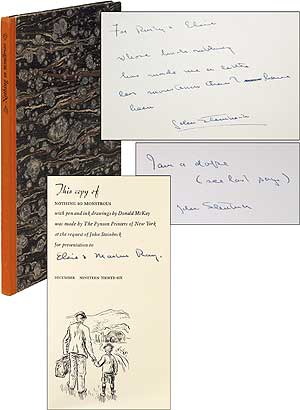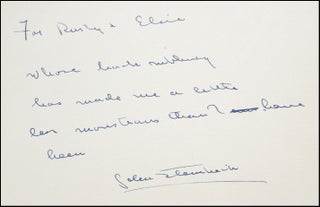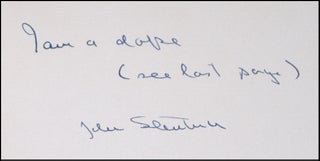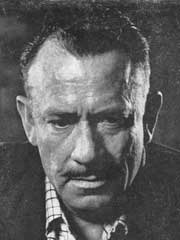New York: Pynson Printers, 1936.
Sold
Hardcover. First Separate Edition (originally published as part of *The Pastures of Heaven*, 1932); *Goldstone* A2f; noting that the paper supply allowed only 370 copies to be printed. Lightly worn at the edges, about fine. Published for subscribers to use as Christmas gifts, the colophon was customized with the subscriber's name following "made by the Pynson Printers of New York at the request of --- for presentation to [blank]." Goldstone notes 50 copies were so designated for Elmer Adler, 100 for Frederick B. Adams, Jr., 150 for Ben Abramson, 50 for Edwin J. Beinecke and 20 for antiquarian bookseller Howard Mott (although evidently fewer were issued with his name; only one is known). Unknown to Goldstone, this is one of apparently only six copies with Steinbeck's name in the colophon. In a letter to Frederick B. Adams, Jr., one of the publishers, Steinbeck requested six copies as he couldn't "afford any more." Steinbeck has filled in the colophon with the name of Elsie and Martin Ray, and has Inscribed upside-down on the rear free endpaper, "For Rusty and Elsie, Whose back rubbing has made me a little less monstrous than I have been. John Steinbeck." In the proper place, right side up on the front free endpaper, the author has Inscribed "I am a dope (see last page) John Steinbeck." Steinbeck was a guest at Martin (Rusty) and Elsie Ray's Mt. Eden Winery in Saratoga, California, where he is said to have written a portion of *The Grapes of Wrath*.
Item #57117








